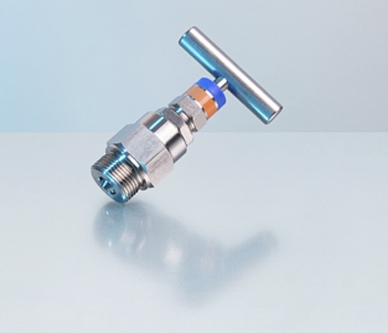
Fugitive emissions attack the atmosphere and escape through numerous small leaks. Even instrumentation valves can become such points over the course of time. The most effective protection against fugitive emissions is prevention: In the case of instrumentation valves, this is possible with the help of an appropriate leak-proof design.
Many plants in the oil and gas industry emit the greenhouse gas methane. The “International Energy Agency” (IEA) attributes 70 % of this to unknown leaks, in addition also to deliberate discharges.
Each plant has thousands of potential emission points, including various types of valves. In comparison to pipeline valves with large nominal widths, the level of risk from instrumentation valves is rather low. Nevertheless, in the interests of climate protection, even the smallest quantities of methane (or any other greenhouse gas) should be prevented from escaping. As with such “climate killers”, neither should gases be released that could endanger plant personnel, such as hydrogen sulphide.

WIKA instrumentation valves for the prevention of fugitive emissions are distinctive: through the orange colour code on their bonnet.
Safety features and colour code
The model IV1x and IV2x needle valves, the model IV3x and IV5x valve manifolds and the model IVM monoflanges from WIKA, for example, can be designed to be appropriately leak-tight. The bonnets of these valves generally offer safety-relevant features: a blow-out proof valve spindle, a non-rotating spindle tip with metal seat (low-wear operation) and a low torque for smooth and precise valve adjustment, even at high pressures.
The version for the prevention of fugitive emissions also has a special sealing packing made of RTFE, a reinforced PTFE. The corresponding WIKA valves are marked through a colour code (orange) on their bonnet and thus are clearly identifiable.
Approval in accordance with two standards
The property of these instruments to not permit fugitive emissions is tested against the requirements of two standards: in accordance with the international standard EN-ISO 15848-1 and in accordance with VDI 2440, which is referred to as “TA Luft” in the Technical Instructions on Air Quality Control administrative regulation for the Federal Emission Control Act. The latter applies above all to plant operators. On the German market, however, it is generally also used as a basis for instrumentation valves.
The VDI standard defines a specific leakage rate for valves. It requires that the design of the sealing system “allows an intended function under the operating conditions to be expected to persist in the long term”. The compliance with the specifications is confirmed exclusively by means of a manufacturer’s declaration.
Test procedures and verification through a third party
The EN-ISO 15848-1 standard formulates concrete conditions for the qualification. It initially divides the valves into the three tightness classes A, B and C, compliance with which must be demonstrated by a test with helium or methane. The valves from WIKA’s IV model range conform to category A (lowest leakage potential). They fulfil the leakage rate of 10-5 mg·s-1·m-1 using the helium leak detection technique. For the load testing of shut-off valves, the international standard has defined clear specifications. The test procedure for test items from the IV model range, for example, comprises a total of 455 mechanical cycles under different thermal conditions (-29 °C, room temperature, +180 °C).
A manufacturer’s declaration alone is not sufficient to confirm an instrument design in accordance with EN-ISO 15848-1. The proof must be verified by an independent third party. In the case of WIKA valves, this is the ABS Group.
Note
Further information on the subject of hydrogen and on the valves of the IV model range can be found on the WIKA website and in our flyer. WIKA offers a customer-specific assembly with measuring instrument for all valves. Such ‘instrument hook-ups’ are delivered ready for operation and leak-tested. If you have any further questions, your contact will gladly help you.
See also our post
Combination of pressure measuring instrument with accessories: Hook-up instead of own assembly

